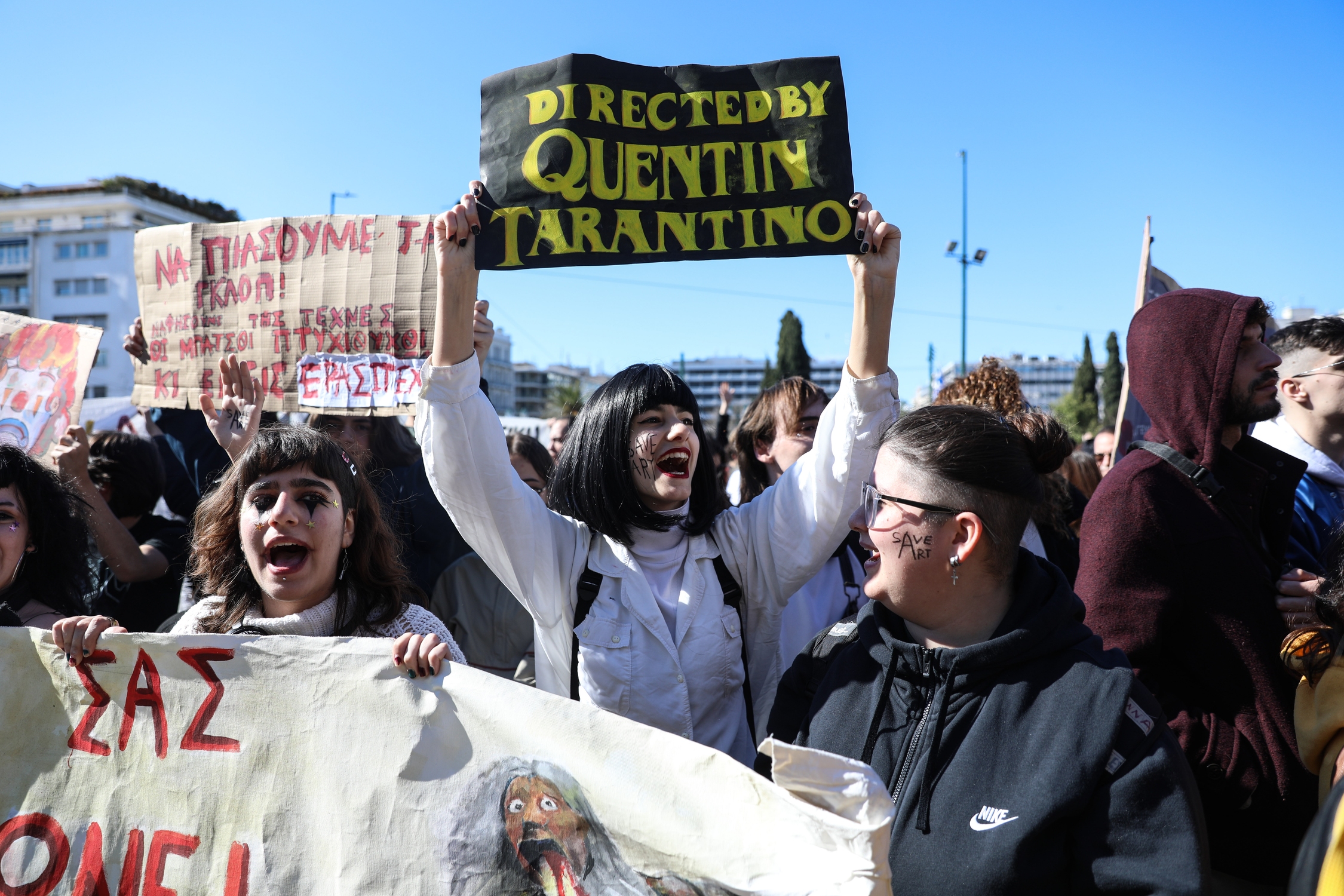In Athens the head from the Sphinx of Amphipolis
In recent weeks, Nikos Stampolidis and his collaborators have been on foot at the Museum of Cycladic Art, almost 24 hours a day. Masterpieces of ancient Greek art were constantly arriving from all corners of Greece and from abroad for the exhibition “Kallos. The supreme beauty “, which is to be inaugurated on the 29th of the month and will operate until January.
Thus, the head of the Sphinx from the tomb of Casta in Amphipolis, which comes out for the first time from the local museum, the statue of Lacaina from the mansion of Herod in Eva Loukous Kynourias, a love archer from Venice, met at the Museum with others and works of art of unique beauty.
The head of the Sphinx had been cut off at some stage of the burial monument in Casta. It was located below the threshold of the last room. The architect of the excavation, Michalis Lefantzis, who supervises the restoration works of the monument, has said that the head of the specific statue was turned towards the visitor. Parts of the wings have also been found in the press attack.
So far the head is the only part of the sculpture that has been executed at the Amphipolis Museum. The Sphinx stays at the monument and waits for his report, he continues to be his guardian. When this is completed, the head will return to the entrance of the tomb. In the exhibition he will join the section of Demonic Beauty with the mixed beings.
(2).jpg)
“Orchumeni Lakaina” is considered an original work by Callimachus, dating to the perfection of the 5th century BC. Herod the Atticus transported her to his villa, in Loukou Kynouria, from the area of the Acropolis. The mansion of 20,000 sq.m., with its impressive collections and history, was completed during the reign of Hadrian (117-138 AD), it was a huge complex, a real city, and its individual buildings have . ordered on the basis of the dominant axes of Greco-Roman urban planning, ie they are rectangular and developed axially. It looks like Hadrian’s villa in Tivoli.

Following long arcades with colonnades, mosaics and statues, the visitor walks parallel to the flow of an artificial river that encloses an islet that communicates with bridges. Everything has the form of a Greek high school. The walk ends with a large examination, a facade adorned with masterpieces of Greek plastic, such as the ascending Lacaines of Callimachus, an original work of the 5th century BC. and portraits of Roman emperors, such as Septimius Severus and Marcus Aurelius, along with portraits of Herod’s family tree.

As for the amazing love from Venice, it is a wonderful sculpture of the 1st AD. century. This is one of the ancients that come from the music of Italy, thanks to the special relationship and the long-term cooperation that Mr. Stampolidis has with their leaders.
“Instead of Visconti’s ‘Death in Venice’, we have this wonderful marble Eros that depicts beauty in its supreme form,” says Nikos Stampolidis. A beautiful, naked teenager with wings, holding his bow to shoot, as mythology wants.
The beautiful exhibition, with which you will say goodbye to the Museum of Cycladic Art by Nikos Stampolidis, is already ready and the professor is now taking care of the last details. At the same time, he is performing his duties in his new position, general manager at the Acropolis Museum. And this last exhibition will have all the characteristics of the exhibitions in the days of N. Stampolidis, as director of MKT, he had accustomed us: solid central core, composition of countless stories, presentation of great exhibits from abroad. In short, his swan song is expected to be a masterpiece.

It will be presented in both buildings of the Museum of Cycladic Art, that is, in the wing of Neophytou Douka Street and at the Stathatou Palace. Two hundred and seventy-three ancient works are planned to be executed, harmony of the Ephorates of Antiquities and Museums of the General Directorate of Archaeological and Cultural Heritage, as well as seventeen works from Museums of Italy and the Vatican
The ancient Greek word “Kallos” means “beauty” and is associated with both females and males, according to the reasoning of its organizer, as presented at the Central Archaeological Council. However, the meaning of “Beauty” in its supreme dimension, is not just a word that refers only to physical beauty. It is an ideal that took place in ancient Greek thought, was expressed through the poems of epic (8th century BC) and lyric (7th – 6th century BC) poets and was gradually crystallized in the texts of the philosophers of the 5th / 4th c. e.g. and so on, who referred to it as a combination of physical appearance and the virtues of the soul. The exhibition focuses on this dimension of “Beauty”, trying to present the various successes of its ideals in everyday life and the philosophical thought of ancient Greece.

Following the flow of the exhibition and its sections, as they are developed in the wing of Neophytou Douka Street, and after an introduction to the concept of “Beauty” and its various exhibitions, the methods and material means for obtaining it are presented regarding the body, the process of beautification at all stages, based on the Homeric description of the beautification of Hera in the Iliad (bath, use of perfumes and ointments, face and body care, hairdressing, adornment).
The following are the “Good and Good of antiquity”, the praise, that is, of the natural beauty of young people, men and women, of everyday life in ancient Greece by their contemporaries, through inscriptions engraved on vases or written in color on stone architecture members etc.
The next section, which is dedicated to the “Beauty of Mortals”, is framed by mythical, but also existing figures of antiquity, known for their natural beauty, such as Adonis and the Beautiful Helen, but also Alexander the Great, along with her anonymous mortals. of everyday life.
The following sections, of “Athletic” and “Heroic beauty”, refer to models of physical combination with mental beauty in antiquity, while the first part of the exhibition in the wing of Neophytos Doukas closes with “Nice Immatures”: “Nice” ( The second part, which takes place at the Stathatos Palace, begins with the “Archaic and Classical / Greek Beauty”, which presents the rendering of the human form and its ethos through a series of works of exceptional art, mainly sculptures, from similar periods. “Grabbing beauties and encounters” is the topic of the next section, as the lack of forms of beautiful people leads gods and heroes to understand and not be grabbed to meet them or have them as their own forever. The exhibition continues with the “Beauty of the deities”, the “Crisis of Paris” for the emergence of the most beautiful goddess, the unity that the “Divine beauty” preaches, as beauty always comes from the gods, who possess it in the absolute degree . Finally, “Demonic beauty” refers to mixed beings, such as the Sphinx, the Medusa, the Scylla, who in their original performance in art are presented with a wild and ugly appearance, while over the years they are humanized and beauty is revealed.




